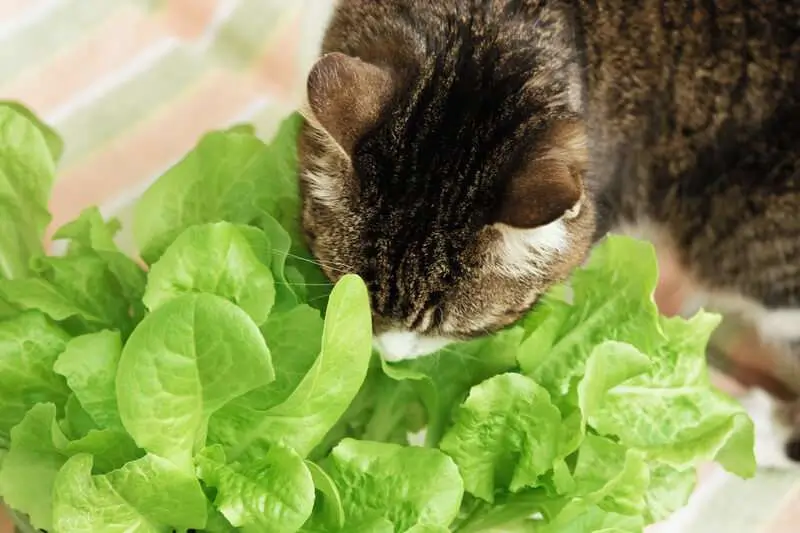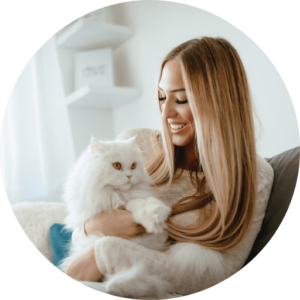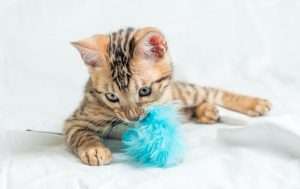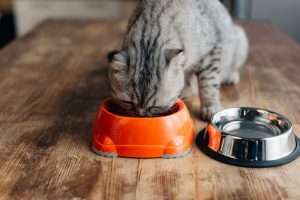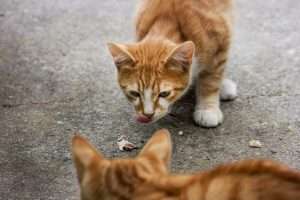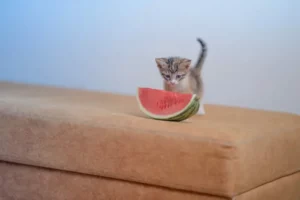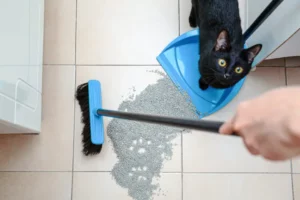Table of Contents
Cats require a balanced diet that includes all the essential nutrients to stay healthy and active. While most cat owners understand the importance of protein and fat in their cat’s diet, the role of vegetables is often overlooked. Vegetables are a rich source of vitamins, minerals, and fiber that can provide numerous health benefits to felines. Among the many vegetables available, lettuce is a popular choice for humans looking to eat a healthy diet, but can cats have lettuce? In this article, we’ll explore the nutritional value of lettuce for cats and whether it’s safe for feline consumption.
The Nutritional Value of Lettuce
Lettuce is a leafy green vegetable that can be a healthy addition to a cat’s diet. It is low in calories and high in fiber, making it a great option for cats who need to lose weight or maintain a healthy weight. Lettuce is also rich in vitamins and minerals that can provide numerous health benefits for cats.
One of the main vitamins found in lettuce is vitamin A, which plays a crucial role in maintaining healthy vision, skin, and immune system function in cats. Lettuce also contains vitamin C, which is an antioxidant that can help to prevent cellular damage and promote healing. Additionally, lettuce is a good source of folate, a B vitamin that is important for healthy blood cell production and proper nerve function.
In terms of minerals, lettuce is rich in potassium, which is important for regulating blood pressure and maintaining healthy heart function in cats. It also contains calcium, which is necessary for strong bones and teeth, as well as iron, which is needed for healthy blood cell production.
While lettuce can be a healthy addition to a cat’s diet, it is important to note that it should not be the primary source of nutrition for cats. Cats are obligate carnivores, which means that their diet should consist primarily of meat. Lettuce should be given as a treat or supplement to their regular diet, not as a replacement for meat-based meals.
There is also a potential risk of feeding too much lettuce to cats. While lettuce is low in calories, feeding too much can cause digestive problems such as diarrhea and vomiting. It is important to introduce lettuce slowly and in small amounts to avoid any digestive issues.
In the next section, we will explore whether or not cats can eat lettuce and if it’s safe for feline consumption.
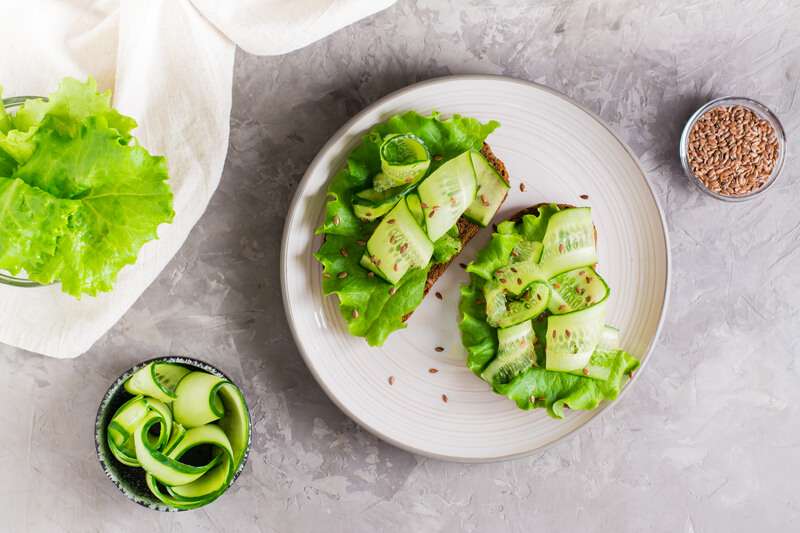
Can Cats Eat Lettuce?
Lettuce is generally considered safe for cats to eat, but it’s important to feed it in moderation and prepare it properly. While lettuce doesn’t provide significant nutritional value for cats, it can be a healthy addition to their diet if offered in small amounts.
However, there are some potential risks and harms of feeding lettuce to cats. One of the main concerns is the risk of choking. Lettuce leaves can easily get stuck in a cat’s throat, especially if they are not chewed properly. To avoid this, it’s important to chop the lettuce into small pieces or shred it before offering it to your cat.
Another potential issue with feeding lettuce to cats is digestive problems. Some cats may have difficulty digesting lettuce, which can lead to vomiting or diarrhea. It’s important to introduce lettuce slowly into your cat’s diet to see how they tolerate it.
In addition, certain types of lettuce can contain toxins that are harmful to cats. For example, iceberg lettuce contains lactucarium, which can cause digestive upset if consumed in large amounts. It’s best to stick to leafy greens such as romaine, spinach, or kale, which are safe for cats to eat in moderation.
It’s also important to note that some cats may have allergies or sensitivities to lettuce or other greens. If you notice any signs of an allergic reaction, such as itching, swelling, or difficulty breathing, stop feeding lettuce to your cat and speak with your veterinarian.
Overall, while cats can eat lettuce in moderation, it’s important to be cautious and aware of the potential risks and harms. If you’re unsure about whether or not to feed lettuce to your cat, consult with your veterinarian for advice.
Alternatives to Lettuce for Cats
In this section, we will explore some alternative vegetables that are safe for cats to eat and how to prepare them for their consumption.
Spinach:
Spinach is a nutrient-rich leafy green vegetable that can provide your cat with essential vitamins and minerals. It contains iron, fiber, potassium, and vitamins A, C, and K. It can be served cooked or raw, but it’s important to note that too much spinach can cause digestive problems due to its high oxalic acid content.
Broccoli:
Broccoli is a great source of fiber, vitamins A and C, and calcium. It can be served cooked or raw, but it’s important to only give your cat small amounts as too much broccoli can cause gas and stomach upset.
Green Beans:
Green beans are a low-calorie vegetable that can be served cooked or raw. They contain fiber, vitamins A and C, and potassium. However, it’s important to avoid giving your cat canned green beans as they often contain added salt and preservatives.
Carrots:
Carrots are a great source of beta-carotene, which is converted into vitamin A in the body. They also contain fiber and potassium. Carrots can be served cooked or raw, but it’s important to only give your cat small amounts as too much can cause digestive problems.
When preparing vegetables for your cat, it’s important to wash them thoroughly and chop them into small pieces to prevent choking. You can mix them into your cat’s regular food or offer them as a separate snack. It’s important to note that vegetables should not make up the majority of your cat’s diet and should only be offered in moderation.
Choosing the right foods for your cat is essential for their health and well-being. A balanced diet that includes high-quality protein, essential fatty acids, vitamins, and minerals is important for maintaining a healthy weight, supporting the immune system, and preventing diseases. If you have any questions or concerns about your cat’s diet, it’s always best to consult with your veterinarian.
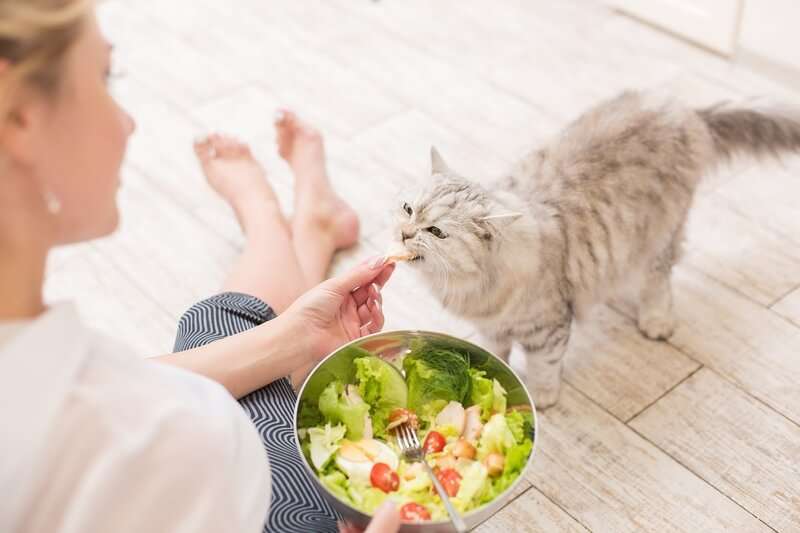
FAQs
While most types of lettuce are safe for cats to eat, there are some varieties that can be toxic. For example, iceberg lettuce has very little nutritional value and can cause digestive upset if consumed in large quantities. Other types of lettuce, such as romaine, spinach, and arugula, are generally safe for cats to eat in moderation.
While lettuce can be a healthy addition to a cat's diet, it should not be the only food that they eat. Cats require a balanced diet that includes a variety of protein, fat, and carbohydrates. Lettuce should only be given as a small part of their diet, and not every day.
Yes, small amounts of lettuce can be given to cats as a treat. However, it should be given in moderation and as part of a balanced diet. Lettuce should not replace their regular meals or be given in excessive amounts.
Lettuce is a low-calorie vegetable that contains a variety of nutrients, including vitamins A and K, fiber, and antioxidants. However, it is not a complete source of nutrition for cats and should only be given in small amounts as a supplement to their regular diet.
Some cats may be allergic to lettuce, which can cause symptoms such as vomiting, diarrhea, or itching. If you suspect that your cat may be allergic to lettuce, stop feeding it to them and contact your veterinarian. They can perform an allergy test to confirm the diagnosis and provide guidance on how to manage your cat's diet.
Conclusion
In conclusion, it is important to provide cats with a balanced diet that includes the appropriate nutrients they need to thrive. While lettuce can be a healthy addition to a cat’s diet, it is important to be aware of the potential risks and to not overfeed your cat. Some alternatives to lettuce, such as spinach, broccoli, and green beans, can also provide valuable nutrients for your feline friend. It is crucial to monitor your cat’s reaction to new foods and consult with your veterinarian if you have any concerns or questions about your cat’s diet or health.
Overall, by understanding what foods are safe for cats to eat and how to incorporate them into their diet, you can help ensure that your cat stays healthy and happy. Remember to always prioritize your cat’s health and well-being when choosing their diet and consult with a veterinarian if you have any concerns or questions.


